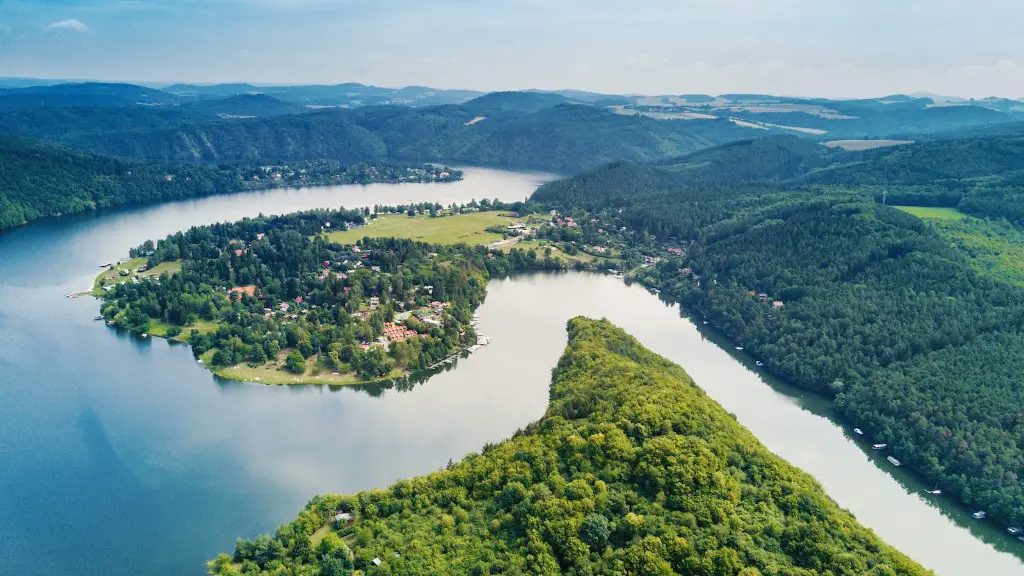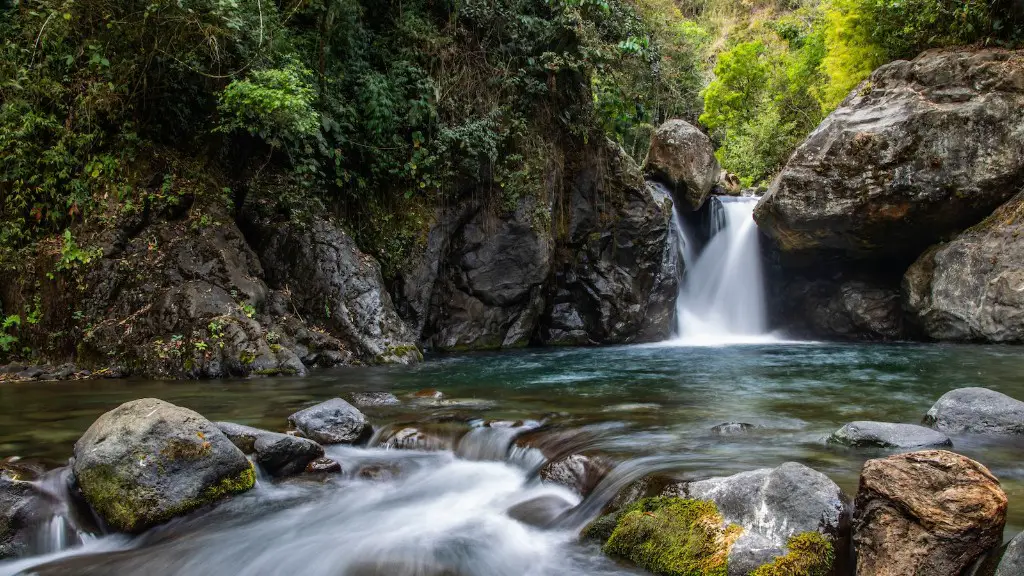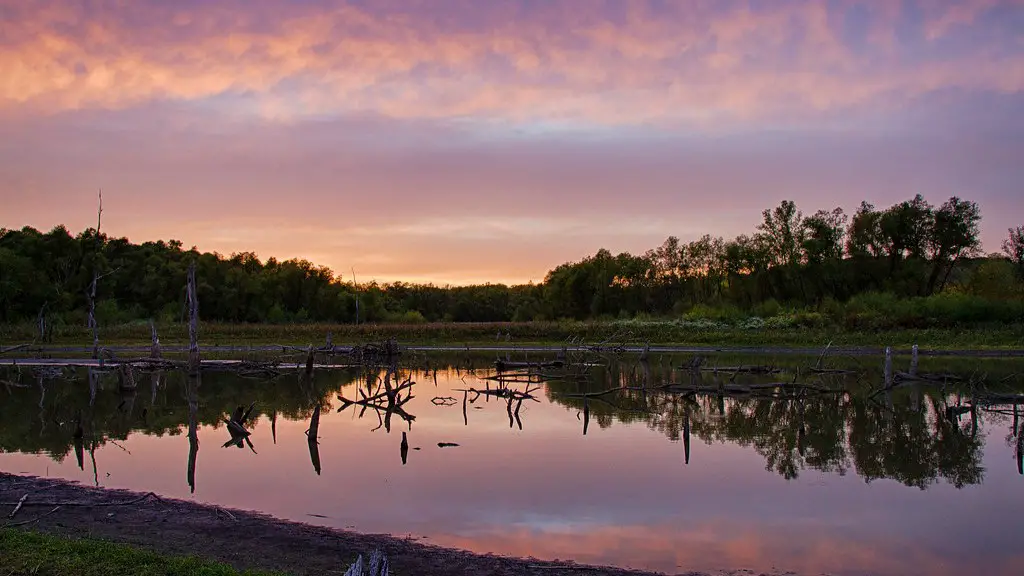The Yangtze River is the longest river in China and the third-longest in the world. It runs through six different provinces and empties into the East China Sea. It has provided many thousands of years of sustenance to thousands of people in the surrounding area, and has become an integral part of Chinese culture. However, it is increasingly being polluted, and its role in the environment is being threatened. But when did the Yangtze River get polluted? In this article, we will explore this topic in depth.
One of the main points to be made when discussing the pollution of the Yangtze River is that industrialisation has been one of the culprits. It is estimated that up to 6 billion tonnes of pollutants are dumped into the Yangtze basin every year, with industrial and agricultural runoff being amongst the worst offenders. In addition, the continued extraction of resources from its basin has played a role in its degradation.
Furthermore, it has been suggested that the three Gorges Dam, built in the early 2000s, may also be to blame. It is believed that the reservoir created by the dam has caused water levels to become stagnant, leading to an increase in local temperatures and an increase in bacteria and pollutants in the water. Additionally, it is argued that the increased tourism to the area caused by the Dam has caused further damage, with waste and litter being left behind. As a result, it is clear that the Dam has had a significant impact on the river’s ecosystem.
Experts suggest that the increasing levels of pollution in the Yangtze River have had a devastating effect on local wildlife. According to a report from the World Wildlife Fund (WWF), the river has experienced a dramatic decline in fish populations, with some species being pushed to the brink of extinction. Additionally, it is believed that the water quality has been severely degraded, with the presence of pollutants such as heavy metals making it increasingly unsustainable for most life forms. As a result, it is clear that the state of the Yangtze River has deteriorated significantly in recent decades.
It is apparent that the pollution of the Yangtze River has been caused by a multitude of factors, but it is clear that industrialisation, resource extraction and the three Gorges Dam have all had a significant impact. As a result, it is essential that measures are taken to address the problem. This may include stricter regulations on polluting industries and better management of the Dam, as well as more investment into improving water quality. Only then can the Yangtze River be protected from further degradation.
The Importance of the Yangtze River
The Yangtze River is not just an essential part of Chinese culture, but of the global environment, too. It is home to a plethora of wildlife, and it is also of vital importance for providing sustenance to millions of people living in the area at risk. In fact, the river provides a significant part of both the food and drinking water for the region. With this in mind, it is clear that the deterioration of the Yangtze River has had an adverse impact on the environment, the local ecosystem and most importantly, the people who rely upon it.
Additionally, it is apparent that the Yangtse River has played a crucial role in the development of China. It has provided a vital source of nutrition, transportation, and economic success for many thousands of years. As such, the health of the Yangtze River is of essential importance in order for China to continue to develop and evolve.
It is important to note too, that the pollution of the Yangtze River has caused several serious health concerns. It is believed that the ingestion of pollutants in the water has caused a number of health issues in the local population, as well as an increase in the number of infant mortality cases. Therefore, the improving of water quality is of utmost importance if the health of the local population is to be improved.
In conclusion, it is clear that the degradation of the Yangtze River has had a massive impact on both the environment and people of China alike. It is essential, therefore, that measures are taken to address the pollution problem, and that the local population gains access to clean, safe drinking water. In doing so, the Yangtse River can become once again sustain life and prosperity.
The Causes of the Yangtze River Pollution
When examining the causes of the Yangtze River’s pollution, it is important to note the industrial activity that has occurred over the past few decades. With the rise of urbanisation, large industrial and manufacturing companies have been taking advantage of the river’s resources, and in doing so, have not taken the necessary steps to ensure that the water remains clean and unpolluted.
Furthermore, it is believed that the extraction and utilisation of resources within the Yangtze River basin is also a major contributor to the pollution of the water. Not only has this depleted the natural reservoir of materials, but it has also left waste in the water, leading to an increase in pollutants.
In addition to this, it is believed that the Three Gorges Dam has also had a detrimental effect on the river’s water quality. Not only has the dam prevented the natural flow of the river, increasing the risk of stagnation, but it has also caused a number of pollutants to accumulate in the water, leading to a severe degradation in its quality.
Finally, it is important to note the role of agricultural runoff. This has been attributed to both the industrial and agricultural processes that are taking place in the area, leading to an increase in the amount of pollutants in the water. This, coupled with the other causes, has had a devastating effect on the health of the Yangtze River.
The Impact of the Pollution on Local Wildlife
It is clear that the pollution of the Yangtze River has had a significant impact on local wildlife and ecosystems. This is due to a number of reasons, including the presence of toxic pollutants, the decrease in water quality, and the disruption to migratory patterns. As a result, it is estimated that the number of fish species in the river has declined significantly, with some on the brink of extinction.
Additionally, it has been suggested that there has been a dramatic reduction in plant life in the Yangtze River basin. Algae blooms, caused by pollutants in the water, are believed to have had a destructive effect on the local vegetation, leading to a decrease in habitats and a decrease in the amount of oxygen available for other organisms.
Finally, the pollution of the Yangtze River has also had an impact on bird species in the area. Studies have suggested that there has been a dramatic decrease in certain aquatic birds in the region, with these birds either being forced out of the area or being killed off by the pollutants.
Therefore, it is clear that the pollution of the Yangtze River has had a devastating impact on local wildlife, with the effects being both immediate and long-term. As a result, it is essential that measures are taken to reduce the pollutant levels in the water, in order to protect both the environment and local wildlife.
Strategies to Reduce the Pollution
It is apparent that the main contributors to the Yangtze River’s pollution are industrialisation, resource extraction and the Three Gorges Dam. Therefore, it is important that steps are taken to address these issues in order to reduce the pollutant levels in the water.
One of the main suggestions is to reduce the amount of pollutants entering the water. This can be done through a number of methods, such as stricter regulations on polluting industries and tighter management of the dam. Additionally, investment must be made into technological solutions that can help to reduce pollutants, such as water purification systems.
Furthermore, it is essential that the local population is educated on the importance of preserving the river’s ecosystem. It is important that people are aware of the importance of the Yangtze River, and the consequences of pollution, in order to motivate them to take sufficient steps to protect it.
Finally, it is also suggested that more effort be put into protecting and conserving the local wildlife. This may involve creating protected areas, introducing stricter regulations on fishing, or investing into restoring habitats. It is believed that by protecting the local wildlife, the Yangtze River will be able to once again provide a prosperous environment for both human and non-human life.
The Long-term Effects of the Pollution
It is clear that the pollution of the Yangtze River has had long-term effects on both the environment and the local population. These effects have not been limited to the river itself, but have spread to the larger ecosystem, with a significant impact on flora, fauna and human health.
For example, it is believed that the pollution of the river has caused a dramatic reduction in fish populations, leading to a decrease in food availability and a reduction in economic activity. Additionally, it is argued that the presence of pollutants in the water has resulted in an increased risk of health issues, particularly in the local population, with an increase in infant mortality having been recorded in the area.
It is also clear that the pollution of the river has affected the environment as a whole, with the presence of pollutants having a detrimental effect on local wildlife, vegetation and habitats. As a result, it is essential that measures are taken to reduce the amount of pollutants entering the river, in order to protect and preserve the environment.
Therefore, it is clear that the pollution of the Yangtze River has had significant, long-lasting effects on both the environment and the local population. As a result, it is essential that measures are taken to reduce these effects and to ensure that the river remains a source of sustenance for years to come.
The Future of the Yangtze River
The future of the Yangtze River is one that is uncertain. While it is clear that efforts must be taken to reduce the amount of pollutants entering the water, it is unlikely that the river will ever fully recover from the damage that has already been done.
It is therefore essential that steps are taken to ensure that the river remains a prosperous environment for both human and non-human life. This may include investing into improving water quality, protecting local wildlife and habitats, or introducing initiatives to educate the local population on the importance of the river.
Additionally, it is important that the local population are given access to safe drinking water. This will help to reduce the risk of health issues and improve the quality of life for those living in the area. Investments into providing safe drinking water, as well as restoring the quality of the water, must be made in order to ensure the health of the Yangtze River.
It is clear, then, that the future of the Yangtze River is heavily dependent on the actions that are taken in the present. By investing into restoring the water’s quality, protecting local wildlife and habitats, and educating the population, we can ensure that the Yangtze River continues to provide sustenance and prosperity for years to come.





